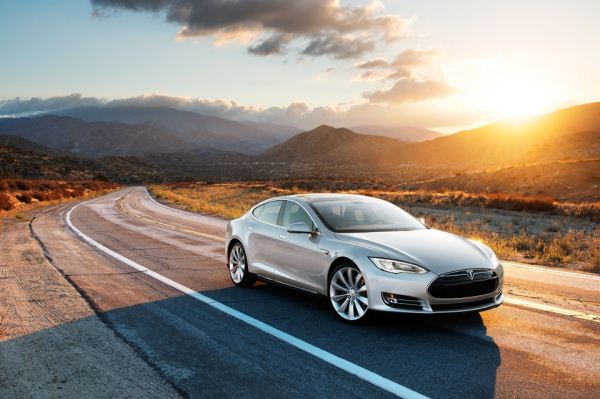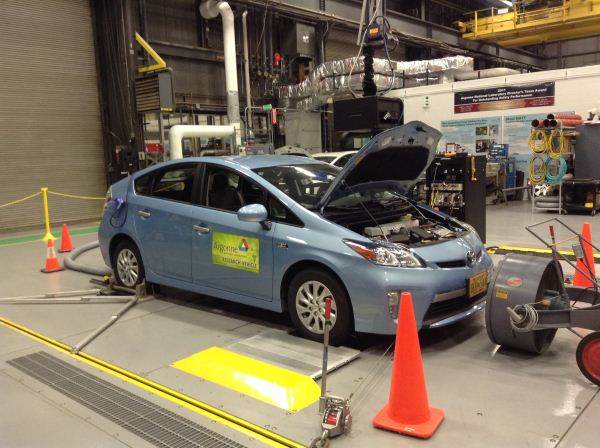The Tesla Model S Controversy: Understanding the Effects of Temperature on Electric Vehicle Efficiency and Range
by Vivek Gowri on February 18, 2013 4:22 PM EST- Posted in
- Auto
- Electric Vehicles
- Tesla Model S
- Nissan Leaf
Thus far, plenty of ink has been spilled regarding the Tesla Model S and the fallout from the New York Times article, and it even showed up in our latest podcast. I feel like my perspective on this topic, as someone who has worked in the EV space as an engineer for the last four years, as well as driving a family owned Nissan Leaf for the last year and a half, is a bit different from our editors who discussed it, as well as most of the others who have written about it.
I’m not particularly interested in getting involved with the back and forth or analyzing what either party said - I feel like the Times reporter didn’t really understand how EVs work, nor how to drive them, and I don’t really agree with Elon Musk’s Matlab data infused response (it felt too vitriolic to get across any point other than Tesla being angry about the article). And just to go back to the point about not understanding how EVs should be driven, you have to tailor your driving style to suit the powertrain in order to get the maximum out of the EV - if you don’t want to, you’re going to be disappointed. Consider it like needing to switch keyboard shortcuts when you move from Windows to OS X - it’s a slight mental recalibration that has to happen for you to use the platform to its fullest. But that’s another story for another time.
What I feel like is getting lost here is actual EV performance in cold weather, or hot weather, or really anything in the way of hard numbers. We all know that battery performance is reduced in more extreme environmental conditions, and that all cars, regardless of powertrain type, consume more energy (fuel or battery) in those extreme climates. Unfortunately, quantifying these general ideas is a bit more difficult. That’s where I come in.
Technology Background
First, a bit of background. I spent the last few months working in Argonne National Laboratory’s Advanced Powertrain Research Facility (APRF). They’re an extremely knowledgeable group of engineers and scientists whose job it is to test advanced technology vehicles in their temperature controlled dynamometer facility, which can sustain temperatures anywhere between -5 F to 100 F. Most of this research is done as a part of the Department of Energy’s Vehicle Technology Program.
Everything from pure electrics to plug-in hybrids, normal hybrids, clean diesels, direct engine turbos, and advanced transmissions (dual-clutch, CVT, etc.) go through the labs with an extended set of instrumentation to collect various speed and consumption metrics. The resulting data sets are truly comprehensive (2 million data cells for 20 minutes on the dynamometer) and allow the researchers to draw conclusions about the various powertrains and their behavior. It’s a pretty impressive setup.
The APRF has released some of the data to the public in something called the Downloadable Dynamometer Database. The D3 pages for the Nissan Leaf includes data from the three different temperatures used in EPA’s 5-Cycle fuel economy test: 20F (with a heater load), 72F (climate control off), and 95F + sun lamps (with an air conditioning load). In all cases involving heating or air conditioning, the climate control system is set to 72F. Using this data, we can take a more in depth look at what the actual penalties of environment are on efficiency and performance, and really see the impact of temperature on energy consumption and range.
Before we start, I should probably explain the terms used in the graphs that follow. UDDS is an urban driving cycle (it stands for Urban Dynamometer Driving Schedule), CS stands for cold start (the first start after the vehicle has been sitting for a number of hours), HS is hot start (any subsequent start after the vehicle has warmed up), HWY is short for HWFET or Highway Fuel Economy Test (also seen as the Highway Fuel Economy Driving Schedule or the EPA’s highway fuel economy cycle), and US06 is a supplemental federal test procedure (SFTP) to provide a more aggressive driving schedule than the relatively tame HWFET cycle. A comparison of the three driving cycles (speed versus time) is shown above.













102 Comments
View All Comments
tipoo - Monday, February 18, 2013 - link
They really are the single bottleneck on an incredibly wide spectrum of things, aren't they? From cell phones to being able to wean ourselves off gasoline.JlHADJOE - Monday, February 18, 2013 - link
Unfortunately they're the best we currently have.Lithium Ion is certainly miles better than when we were using NiCD or NiMH.
JPForums - Tuesday, February 19, 2013 - link
Well, there are other options. Silver Zinc (AgZn) batteries are safer than Lithium ION / Polymer as they contain no hazardous materials and don't suffer from thermal runaway. Note: Older Silver Oxide cells contain small amounts of mercury.With lithium based batteries, you have to trade off specific energy (Wh/Kg), energy density (Wh/L), and maximum discharge rate. While advanced Lithium technologies might allow them to achieve higher specific energy or energy density than AgZn, they often come at the expense of each other. For instance, Li-Polymer has higher specific energy than Li-ION, but it also has lower energy density and discharge rate. You would have to use more packs in parallel to achieve the discharge rates of Li-ION or AgZn. They also have a more limited life, even when they aren't in use.
AgZn also has to make tradeoffs, but as less work has been put into them vs lithium, the characteristics don't vary nearly as much. Looking at the overall characteristics of any single AgZn cell paints a much more impressive picture when compared to a single Lithium based cell.
Of course, there are still barriers to entry. AgZn has lower cycle durability. Seeing as Li-ION managed to increase their cycle durability from several hundred cycles to over 1200 cycles, I'd expect AgZn could overcome this with a little work. The largest barrier to entry is most certainly cost. Don't know if there is much we can do about it either. Still, if research can improve AgZn by the amounts that it has improved Lithium based cells, they may become worth the cost.
JPForums - Tuesday, February 19, 2013 - link
Also note Silver Zinc > Silver Oxide.Gokimoki - Tuesday, February 19, 2013 - link
Or forget batteries entirely and go for ultra capacitors. We really need to start pumping in the same kind of r&d funding that li-ion gets into UC's. That would pretty much solve issues with EVs. You'll never get the same energy density as batteries, but being able to recharge in seconds to minutes, weigh MUCH less (partially negating the lower energy density), no toxic components, and virtually unlimited (100 000+) charge-discharge cycles more than make up for it.Daniel Egger - Thursday, February 21, 2013 - link
> You'll never get the same energy density as batteries, but being able to recharge in seconds to minutesYou forgot to mention the fact that there's close to zero infrastructure available where you can actually consume that kind of necessary energy to charge in "seconds to minutes". If it was you'd still have the problem that no power grid operator is going to allow these duty cycles. Plus the cables would be massive and the safety mechanisms ridiculously hard to implement. If they'd finally manage to get the range up to the needed levels that would be even harder to do. Will we see single digit minute charges? Possibly. Seconds? Never ever.
That's exactly the reason why I think battery driven EVs are never going to go mainstream.
greevar - Friday, February 22, 2013 - link
You're right. The grid, as it exists, will not support UC powered cars, but that's not a valid reason to dismiss the idea. The power grid is already an outdated design in need of a change; it might be worth making changes that support new power grid topographies and consumption.Rasterman - Sunday, February 24, 2013 - link
Totally false, "stations" could simply have their own ultracaps that are charged overnight or a long period, or some other method of storing a lot of energy, molten salt, giant flywheels, etc.Getting the energy to the car is only an engineering problem. Drive over an automated plug, station detects you are there and automatically debits your card and moves a coupler 4" to mate with the bottom of your car, which feeds directly into your battery, and offloads kJ of energy in seconds. The interface can be whatever is needed, a 5" connector is needed? No problem, its 100% automated and 100% safe.
After electric cars are mainstream trickle chargers can be installed in or on the sides of roads, no physical contact is required, but would probably be more efficient. Thus you would NEVER have to stop and recharge.
The possibilities are endless, anything can be done.
greevar - Monday, February 25, 2013 - link
Like I said, "as it exists".ikkai - Wednesday, February 27, 2013 - link
Hello, I totally agree with you. A recent breakthrough on super capacitors is exactly what is on your mind and it will definitely change our everyday lives. Here is a video explaining the technology http://youtu.be/OtM6XJlynkkFor those who prefer to just read :), a new carbon based energy storage capacity dubbed as "super supercapacitors" can obtain the same energy density as li-ion batteries while having 100,000+ refill cycles, under a minute charge durations and everything else capacitors are good at.
This thing is like a miracle, they produce it by using normal DVD burners! You can even dispose it by using it as fertilizer for plants! If you got hyped up, continue to read at here (extremetech article): http://bit.ly/w6C0rY
p.s. By the way, thanks to the author of the article :)